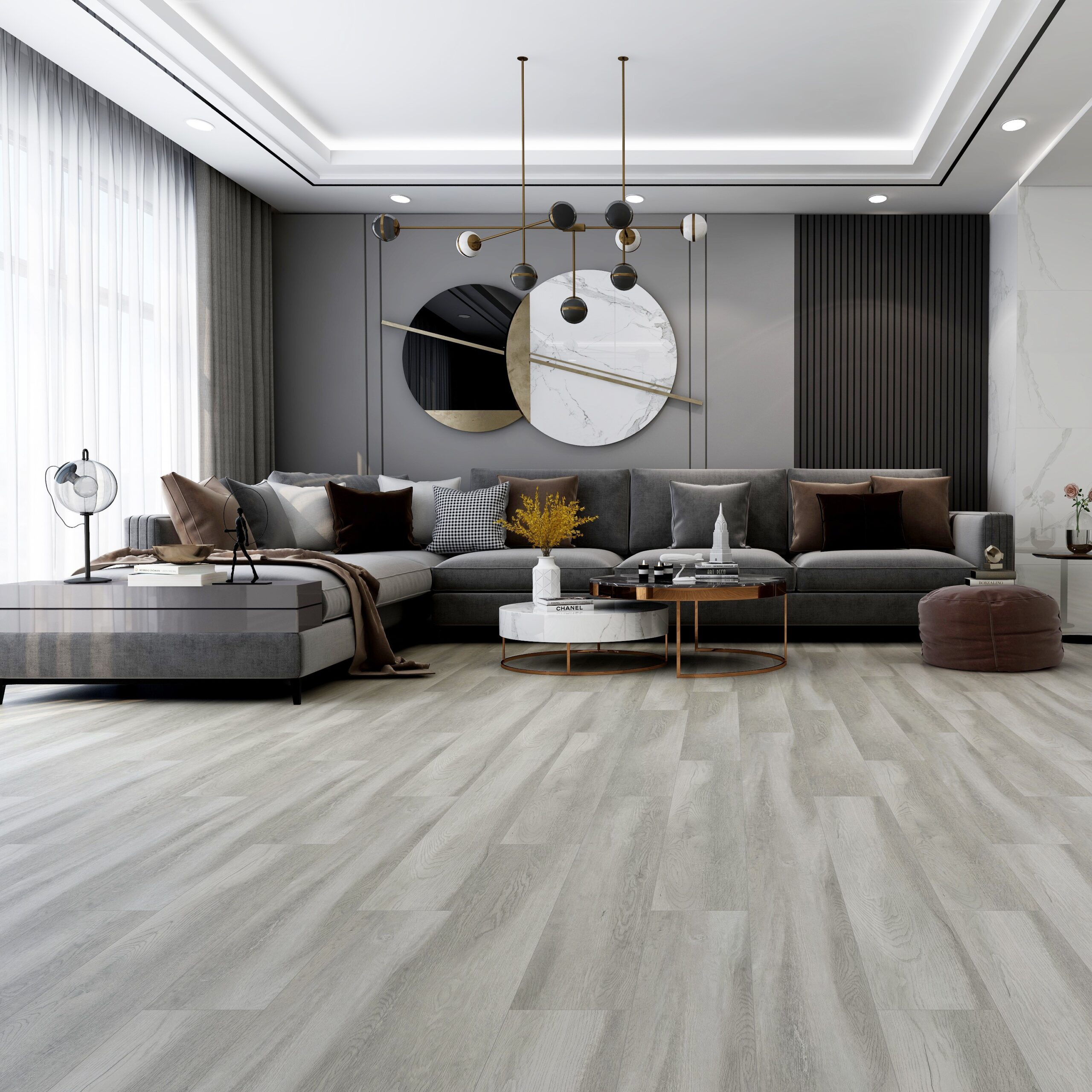Vinyl and laminate flooring are two of the most popular choices for residential flooring among homeowners because of their low cost, long lifespan, and ease of installation. However, there are distinctions between them in terms of construction, outward appearance, and upkeep requirements. In this in-depth guide, we'll compare and contrast the two most popular types of flooring: vinyl and laminate, with the goal of assisting you in making an informed decision about which one is best for your house.
First Section: Vinyl Floor Covering
Luxury vinyl plank (LVP) flooring is a type of vinyl flooring that is available in sheet, tile, and luxury vinyl plank (LVP) formats. Vinyl flooring is made of synthetic materials such as PVC. Vinyl flooring is well-known for its low cost, longevity, and adaptability in a variety of settings.
Construction: The layers of PVC or other synthetic materials that make up vinyl flooring are bonded together to form the flooring's layers. The top layer is known as the wear layer, and it serves the purpose of protecting the flooring from scuffs, stains, and fading. The design layer is the layer that determines the appearance of the vinyl flooring, such as whether it has the appearance of tile or wood.
The core layer is responsible for giving the flooring its stability and support.
Aesthetically, Industrial Vinyl Flooring is available in a wide range of designs, hues, and patterns to choose from. LVP, in particular, has the ability to imitate the look of natural hardwood flooring and is frequently used as an alternative to hardwood flooring because it is more affordable.
The upkeep of vinyl flooring is simple, and all that is required is the use of a damp mop and some mild detergent on a consistent basis. It is also resistant to water, so it won't get damaged if something gets spilled on it or if it gets wet.
The Second Section: Laminate Floors
Layers of fiberboard are used in the construction of laminate flooring, and these layers are bonded together using a high-pressure laminate layer. Laminate flooring is well-known for its numerous benefits, including its low cost, its long lifespan, and its simple installation.
The construction of laminate flooring consists of a core layer of fiberboard that acts as a support system for the flooring and helps maintain its stability. The high-pressure laminate layer is the layer that is responsible for giving laminate flooring its appearance, regardless of whether the flooring is designed to look like wood or tile. The top layer is known as the wear layer, and it serves the purpose of protecting the flooring from scuffs, stains, and fading.
Regarding its outward appearance, laminate flooring can be purchased in a wide selection of designs, hues, and patterns. Laminate flooring, much like vinyl flooring, can be designed to mimic the appearance of natural hardwood flooring.
Maintenance: In addition to being simple to clean and maintain, laminate flooring only calls for periodic cleaning with a damp mop and a mild detergent. However, it does not have the same level of resistance to water as vinyl flooring and can be ruined if there is an excessive amount of moisture.
Differences in the Construction of Vinyl and Laminate Flooring, Part 3:
The difference between laminate flooring and vinyl flooring is that laminate flooring is made of fiberboard rather than synthetic materials. When compared to laminate flooring, vinyl flooring has a wear layer that is significantly thicker, making it significantly more scratch- and stain-resistant.
The appearance of natural hardwood flooring can be imitated by both vinyl and laminate flooring; however, luxury vinyl plank flooring (LVP) can provide a more realistic look and texture than laminate flooring.
Vinyl flooring requires less maintenance than laminate flooring because it is more resistant to water and can withstand moisture as well as spills. However, laminate flooring is susceptible to damage when exposed to an excessive amount of moisture, and as a result, its installation in high-moisture areas such as bathrooms and laundry rooms is not advised.
Choosing the Appropriate Floor Covering for Your House (Part 4)
When deciding between vinyl and laminate flooring, it is essential to take into consideration your individual requirements and inclinations. Vinyl flooring is an option to consider if you care about cost, longevity, and resistance to moisture, all of which are characteristics that vinyl possesses. However, if you want a look and texture that is more realistic, or if you plan to install flooring in an area that has low moisture, laminate flooring might be a better option for you.
It is also very important to think about the process of installing the flooring as well as the quality of the flooring itself. Flooring with a higher quality may have a longer lifespan and be more durable than options with a lower quality. A professional installation can not only guarantee a successful installation but also help avoid any problems that may arise.
Maintenance and Care, which is the focus of Part 5
Maintenance and care that is performed regularly can extend the life of your vinyl or laminate flooring and keep it looking like it was just installed. Damage to the flooring can be avoided by performing routine cleaning with a damp mop and mild detergent, cleaning up spills as soon as they happen, and avoiding wearing shoes with sharp soles or high heels. It is possible to prevent damage to the flooring, such as scratches and dents, by placing furniture pads under the legs of the furniture.
It is essential to remember that distinct kinds of vinyl and laminate flooring may call for different kinds of upkeep, and it is important to be aware of this fact. To keep its appearance and durability in good condition, certain types of LVP, for instance, might call for a particular cleaner or cleaning method. Always refer to the manufacturer's instructions when looking for recommended maintenance procedures.
